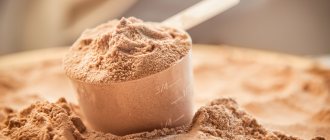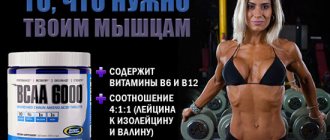What is vitamin D?
Vitamin D is a fat-soluble vitamin that promotes calcium absorption, regulates bone growth, and plays a role in immune function.
Your skin produces vitamin D when exposed to sunlight. However, if you spend most of your time indoors or live in high latitudes, you will need to get this vitamin from your diet.
Good sources of vitamin D include fatty fish, fish oil, egg yolk, butter and liver.
However, it can be difficult to get enough of this vitamin from your diet since rich natural sources are rare. For these reasons, people often don't get enough vitamin D.
Fortunately, many food manufacturers add it to their products, especially milk, margarine and breakfast cereals. Supplements are also popular.
To prevent symptoms of vitamin D deficiency, regularly eat foods rich in the vitamin, spend a certain amount of time in sunlight each day, or take a supplement.
Because vitamin D is fat-soluble, it is best to choose an oil-based supplement or take it with a meal that contains some fat ().
The vitamin has two main forms:
- Vitamin D2 (ergocalciferol)
- Vitamin D3 (cholecalciferol)
Their differences are discussed in detail below.
Summary:
Vitamin D is a fat-soluble vitamin that exists in two main forms: vitamin D2 (ergocalciferol) and vitamin D3 (cholecalciferol).
Vitamin D2 and D3 - what is the difference between ergocalciferol and cholecalciferol
Both forms of the vitamin have a number of identical, vital effects on the human body. Both of them are essentially provitamins, rather, even prohormones. After undergoing transformations in the liver and kidneys, both ergo- and cholecalciferol are converted into the same hormone-like substance - calcitriol . This active form of vitamin D promotes the absorption of the main bone minerals – calcium and phosphorus – from food, and regulates their balance and metabolism in the body.
Despite the similarity of their meaning for us, forms D2 and D3 differ not only in the structure of the molecule (C28H44O and C27H44O), but also in the features of interaction with the human body. Indeed, before being converted into calcitriol, they exhibit slightly different properties. Vitamin D and D3 – what is the difference?
The differences between these substances are inherent in the very method of their production. Ergocalciferol (D2) is a product of the effect of solar or artificial ultraviolet radiation on ergosterol, a sterol of fungi and yeast. Since fungi are part of plants, you can often hear that plants are the source of vitamin D. But in fact, it is correct to talk only about mushrooms and yeast. Cholecalciferol is the result of contact of UV rays with 7-dehydrocholesterol in animals and humans. It is D3, and not D2, that is produced in our skin thanks to ultraviolet radiation, which in itself indicates a greater affinity for us with the D3 form.
The bioavailability of vitamin D3, according to scientists, was indeed higher than that of D2. By summing up indicators such as biological activity, resistance (stability) of the compound to temperature, chemical and other factors, as well as time of action in the body, the researchers came to the conclusion that D3 is more effective than D2 by approximately 30%.
The metabolic pathway of vitamin D2 to its active form, calcitriol, is much longer than that of D3. Moreover, during the transformations, by-products are formed that complicate the work of internal organs. Therefore, vitamin D2 is more dangerous in case of overdose; it causes intoxication faster than D3. It has also been established that D2 and D3, when taken, do not maintain the achieved level of calcitriol in the blood for the same length of time. When taking D2, the half-life of active vitamin D occurs almost 3 times faster. So the advantages of drugs with the D3 form of this vitamin are obvious.
Vitamin D3 comes from animal foods, and vitamin D2 comes from plant foods.
The two forms of vitamin D differ depending on dietary sources.
Vitamin D3 is found only in animal foods, while D2 mainly comes from plant sources and fortified foods.
Sources of Vitamin D3
- Oily fish and fish oil
- Liver
- Egg yolk
- Butter
- Nutritional supplements
Sources of Vitamin D2
- Mushrooms (grown in ultraviolet light)
- Fortified products
- Nutritional supplements
Because vitamin D2 is cheaper to produce, it is the most common form in fortified foods.
Summary:
Vitamin D3 is found only in animal products, and vitamin D2 is found in plant foods.
Effect on the body
Vitamin D3:
- Takes part in the formation of bones and teeth, prevents the development of rickets.
- Has a beneficial effect on the immune system - increases the body's resistance.
- Important for the nervous and muscular systems.
- May reduce the risk of cancer.
- Prevents many diseases such as diabetes and other autoimmune diseases (thyroid disease, multiple sclerosis, rheumatoid arthritis)
Vitamin D3 is made in your skin
Your skin produces vitamin D3 when exposed to sunlight.
Specifically, UV-B ultraviolet radiation from sunlight causes the formation of vitamin D3 from the compound 7-dehydrocholesterol in the skin ().
A similar process occurs in plants and fungi, where ultraviolet radiation leads to the formation of vitamin D2 from ergosterol, a compound found in vegetable oils ().
If you regularly spend time outdoors, wearing light clothing and not wearing sunscreen, you can get all the vitamin D you need.
For Indians, about half an hour of midday sun twice a week provides sufficient ().
Just keep in mind that this exposure duration does not apply to residents of countries far from the equator. In these countries it may take you longer to achieve the same results.
However, be careful not to spend too much time in the sun without sunscreen. This is especially important if you have fair skin. Sunburn is a major risk factor for skin cancer ().
Unlike dietary vitamin D, you cannot overdose on vitamin D3, which is produced in your skin. If your body already has enough of this nutrient, your skin simply produces less of it.
However, many people get very little sun. They either work indoors or live in a country where there is little sunlight in winter. If this applies to you, make sure you eat plenty of vitamin D-rich foods regularly.
Summary:
Your skin produces vitamin D3 when you spend time in the sun. In contrast, vitamin D2 is produced by plants and fungi exposed to sunlight.
☀️Who needs to take vitamin D?↑
There are established opinions:
-if you are in the sun/go to a solarium, then vitamin D is definitely normal.
-vitamin D is needed only for babies in the first two years of life to avoid rickets
It turns out that both statements are not entirely true, and this vitamin is not as simple as it seems. In recent years, many studies have been conducted showing that vitamin D is of great importance for the health of the body.
The Russian Association of Endocrinologists recommends preventative vitamin D intake all year round for absolutely everyone! It is especially important for children and the elderly.
Vitamin D3 is more effective in improving vitamin D status
Vitamins D2 and D3 are not equal when it comes to improving your vitamin D status.
Both are effectively absorbed into the blood. However, the liver metabolizes them differently.
The liver metabolizes vitamin D2 to 25-hydroxyvitamin D2 and vitamin D3 to 25-hydroxyvitamin D3. These two compounds are collectively known as calcifediol.
Calcifediol is the main circulating form of vitamin D, and its blood levels reflect your body's reserves of the nutrient.
For this reason, your healthcare provider may assess your vitamin D status by measuring your body's calcium levels ().
However, vitamin D2 appears to provide less calcifediol than an equal amount of vitamin D3.
Most studies show that vitamin D3 is more effective than vitamin D2 in increasing blood levels of calcifediol (, ).
For example, one study of 32 older women found that a single dose of vitamin D3 was nearly twice as effective as vitamin D2 in raising calcifediol levels ().
If you plan to take a vitamin D supplement, consider taking vitamin D3.
Summary:
Vitamin D3 appears to be better than D2 in improving vitamin D status.
Indications for use
Ergocalciferol is prescribed to prevent rickets in children. Indications for its use are the following diseases:
- osteopathy;
- muscle dystrophy;
- skin problems;
- lupus;
- arthritis;
- rheumatism;
- hypovitaminosis.
Vitamin D2 promotes rapid healing of fractures, sports injuries, and post-operative scars. It is taken to improve liver function, to alleviate menopausal symptoms, for disorders of the thyroid gland, and for a predisposition to high blood sugar levels.
Vitamin D2 supplements may be of lower quality
Scientists have expressed concern that vitamin D2 supplements may be of lower quality than D3 supplements.
In fact, research shows that vitamin D2 is more sensitive to humidity and temperature fluctuations. For this reason, vitamin D2 supplements may be more likely to go bad over time ().
However, whether this has anything to do with human health is unknown. Additionally, no studies have compared the stability of vitamins D2 and D3 dissolved in oil.
Until new research proves otherwise, you should not worry about the quality of vitamin D2 supplements. Just make sure your supplements are stored in a closed container, at room temperature, in a dry place and away from direct sunlight.
Summary:
Vitamin D2 supplements may be more likely to spoil in storage. However, it is unknown whether this applies to oil-based vitamin D2. More research is needed to explore the implications of this for human health.
Contraindications
Medicines containing calciferol should not be taken for the following pathologies:
- tuberculosis;
- stomach ulcers;
- hypercalcemia;
- heart disease;
- individual intolerance;
- acute kidney and liver diseases.
Each supplement may have its own contraindications, so before purchasing the drug you need to study the composition and instructions for use.
How to Improve Your Vitamin D Status
Luckily, there are many ways to improve your vitamin D status.
Below are a few ideas:
- Eat mushrooms that have been exposed to ultraviolet light ()
- Take fish oil supplements such as cod liver oil
- Eat oily fish twice a week ()
- Drink milk or orange juice fortified with vitamin D
- Eat eggs and butter ()
- Spend at least half an hour in the sun every day if possible
If you take vitamin D supplements, do not exceed the safe upper intake level, which is 4,000 IU (100 mcg) per day for adults ().
According to the US Institute of Medicine, the recommended daily intake is 400-800 IU (10-20 mcg), but recommended supplement doses range from 1000 to 2000 IU (25-50 mcg) per day.
Summary:
You can increase your vitamin D levels by regularly eating foods rich in vitamin D and spending time in the sun.
Summarize
- Vitamin D is not a single compound, but a family of related nutrients. The most common dietary forms are vitamins D2 and D3.
- Form D3 is found in fatty animal products such as fish oil and egg yolk. Your skin also produces it in response to sunlight or ultraviolet radiation. In contrast, vitamin D2 comes from plants.
- Interestingly, vitamin D3 is more effective in increasing vitamin D levels in the blood. Although scientists debate the relevance of this for human health.
- To maintain adequate vitamin D levels, regularly eat plenty of vitamin D-rich foods or spend some time in the sun. If you take a supplement, vitamin D3 is probably your best choice.
Tags: Vitamin D
- Related Posts
- 12 Health Benefits of DHA (Docosahexaenoic Acid)
- Manganese: beneficial properties, dosage and sources, side effects
- How are probiotics different from prebiotics?
« Previous entry
Benefits of cholecalciferol
- Promotes the process of losing weight;
- Increases bone strength;
- Improves immune function;
- Improves mental health;
- Helps fight cancer cells.
Promotes weight loss
It is often used to maintain weight. Research shows that vitamin D levels tend to be lower in people with more body fat. And taking it together with calcium can speed up the process of burning fat and losing weight, which was proven in one study conducted by the Department of Social and Preventive Medicine at Laval University in Canada.
Promotes Bone Health
D is essential when it comes to bone health. One of the most serious symptoms of a lack of natural cholecalciferol in children is rickets, a condition characterized by softening and weakening of the bones. To increase bone strength, you must first increase the absorption of calcium, which is needed to maintain skeletal integrity. In addition, it is involved in the metabolism of phosphorus, another mineral equally important for bone health.
Improves immune function
One of the most important benefits of cholecalciferol is its ability to strengthen the immune system and protect against infection. Deficiency of this important trace element slows down wound healing and increases the risk of infection; it is also an integral part of the functioning of immune cells in the body. Low serum levels of vitamin D are associated with more frequent recurrences of upper respiratory tract infections, further demonstrating how important it is for human immunity.
Strengthens the psyche
Vitamin D is beneficial for promoting mental health and improving mental performance. Research shows that its deficiency is associated with problems such as depression, anxiety, Alzheimer's disease, bipolar disorder and schizophrenia. According to a study conducted at the University of Washington, low levels of this vitamin are associated with poor mood and worsening cognitive function in older adults.
Fights cancer cells
Although this claim has only been tested in a few studies, it is still safe to say that cholecalciferol influences several aspects of cancer development, including tumor growth and cell death. Vitamin D deficiency increases the risk of developing certain types of cancer, including breast, prostate, colorectal, ovarian, kidney and stomach cancer.











